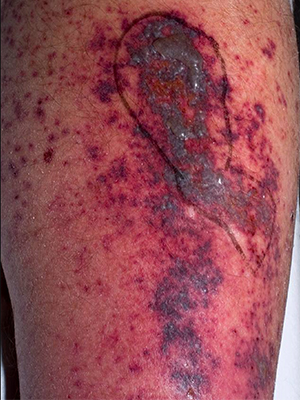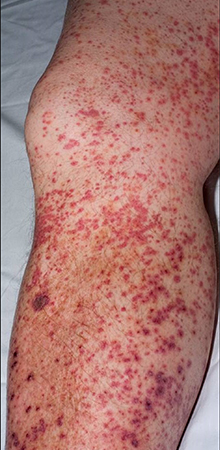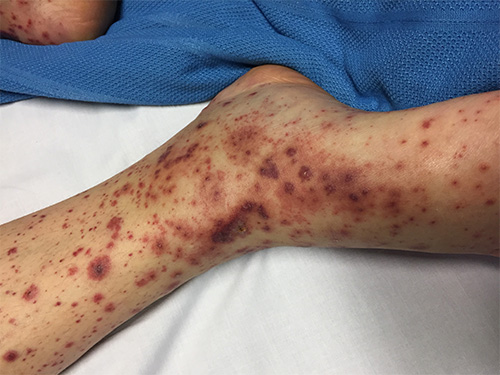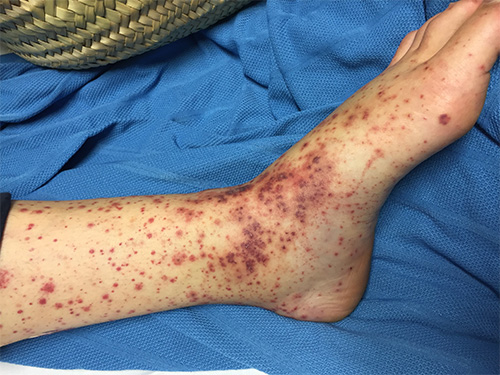Presentation of leukocytoclastic vasculitis
Fiorentino, 2003Jennette, 2013
For information on systemic vasculitides, see Systemic vasculitides in the Rheumatology guidelines.
The most common cutaneous small vessel vasculitides encountered are leukocytoclastic vasculitis and urticarial vasculitis. See Cutaneous vasculitis for photos of cutaneous vasculitis.
Leukocytoclastic vasculitis (LCV) typically presents as palpable purpura (nonblanching palpable rash) on the lower legs. Other cutaneous eruptions can also be present (eg urticaria-like lesions, erythematous macules, ecchymoses, vesicles, bullae, pustules, livedo reticularis, ulcers, nodules). Clinical appearance of LCV can be affected by infection, drugs, blood circulation, platelet number and function, temperature and local pressure. Other organ involvement, especially in the joints and kidneys, indicate a systemic vasculitis. Although most cases of LCV only involve the skin, systemic symptoms (most commonly arthralgias and arthritis) are present in up to 30% of patientsBaigrie, 2022.
In a patient presenting with suspected or confirmed cutaneous vasculitis (including LCV), investigate for evidence of systemic involvement. The extent of systemic involvement and whether the patient is unwell determine urgency of specialist referral.




